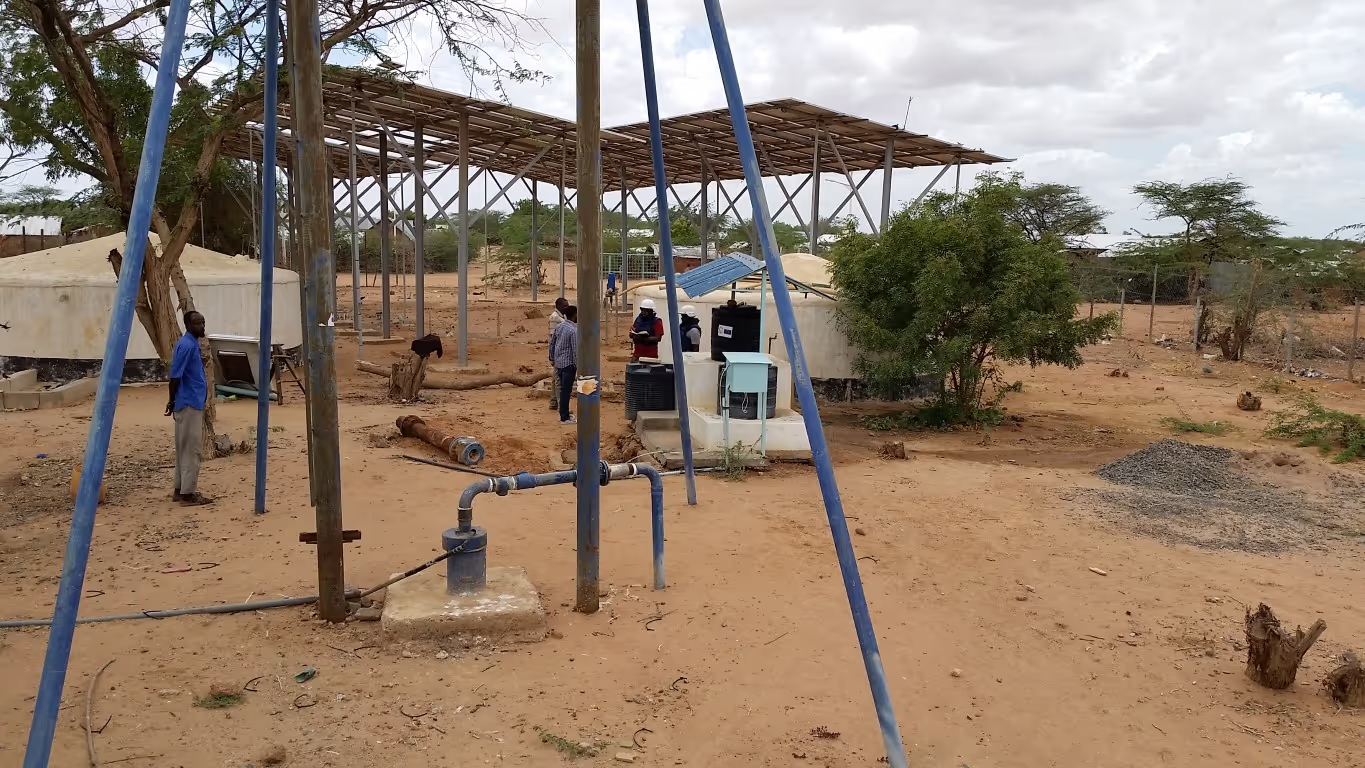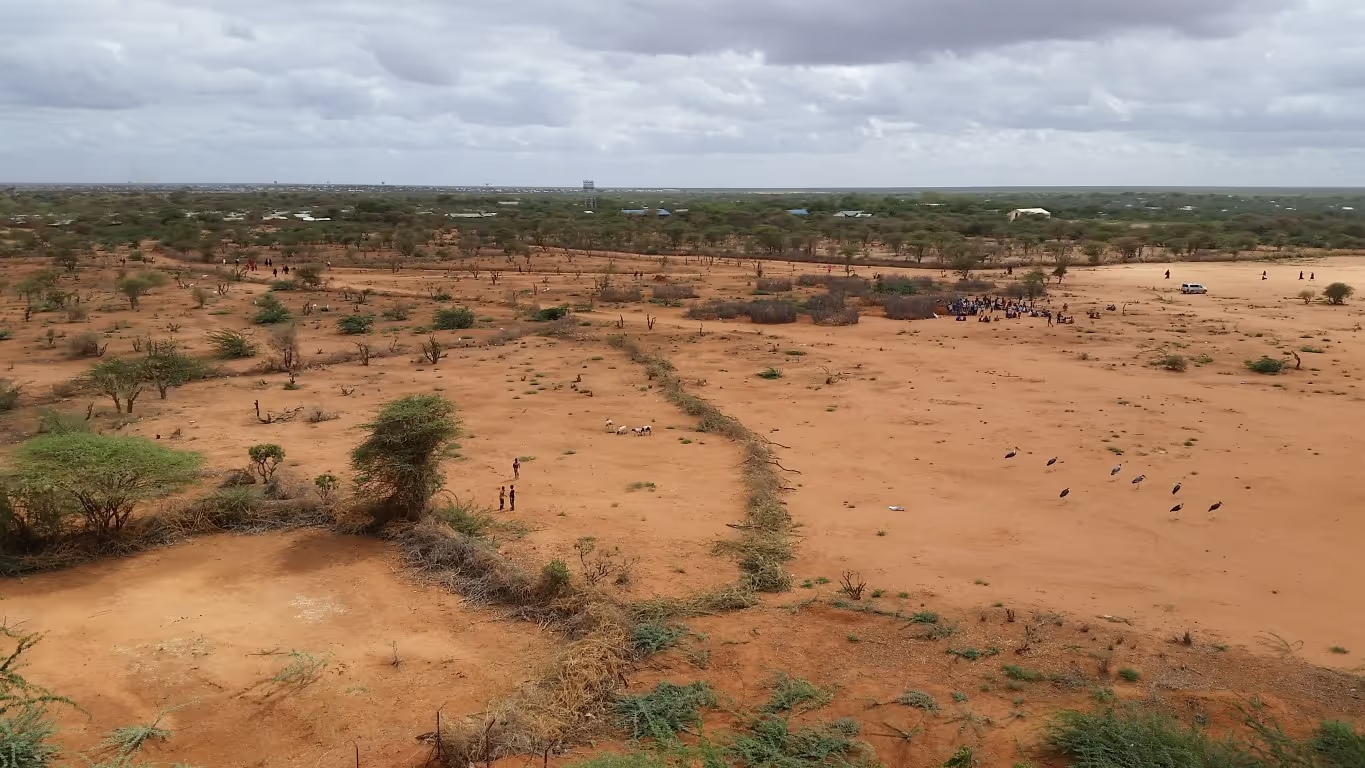Using BRCK Internet of Things technology in Dadaab

It’s 6:30AM on a cool Nairobi morning. Clarence “Killah” Alucho, Barre Yasin and I (Kurt Unger) are at Wilson Airport on our way to Dadaab; a town in eastern Kenya best known as one of the world’s largest refugee camps. Our aim, is to work with the United Nations High Commissioner for Refugees (UNHCR) Water, Sanitation and Hygiene (WASH) department in Dadaab to help them monitor the millions of litres of water that they pump daily. BRCK, based in Nairobi, is a natural fit since we excel at developing communications technology for emerging markets.

This project is focused on PicoBRCK; BRCK’s Internet of Things (IOT) platform. We’ve spent a few weeks focused on testing a chlorine sensor, updating the base PicoBRCK design, creating the schematic for this application and designing the enclosure. It’s time to head to Dadaab and verify if we had made any incorrect assumptions before ordering the circuit and case.
The 70 minute, tri-weekly flight is surprisingly full; turns out that there are quite a few people making their way in and out of Dadaab on a regular basis. It replaces a full day of travel over very poor roads through insecure territory. We are greeted by Evans Nyangano and Osman Ahmed who head up UNHCR’s WASH program in Dadaab. We chat a little and without much delay we are off to survey some sites; this is a group of engineers who all want to get work done!
Within minutes we meet a crowd of students blocking the road. They are protesting the lack of teachers and facilities. Our driver handles the situation superbly; he immediately identifies the organizers and brings them to the police station where they can formally lodge a complaint. On the road again, Evans radios in that a vehicle with five passengers is en-route to Hagadera Camp. Dadaab is actually a collection of refugee camps and the main insecurities are in the few kilometers between camps - not actually within the camps.

A few minutes later we are in the camp. We can see women filling containers with water and a few kids are flying kites despite the heat. The refugees are prevented from building permanent structures so the houses are as nice as can be expected without using cement. Then we arrive at the first site and our preconceptions quickly come crashing down. From the number of installations to the diameter of the pipes to the size of the solar panel array; this is a large installation, and it’s only one of many!
We try to ask as many questions as possible to understand both the technical and logistical aspects of the project. Do we use solar or AC for power? Will the units use GSM or sub-GHz RF mesh for communication? What is the water pressure of the system? How many litres are pumped per hour? What kind of repairs and work is UNHCR capable of doing without bringing resources from Nairobi? The questions come thick and fast.
We continue on to visit the rest of the pumping stations in the Hagadera camp and by 4PM we are back at the UNHCR compound. It’s still fairly hot so we take a bit of time to get cooled off before debriefing about what we have observed. As a start Barre looks into the chlorine sensor we have specified to make sure it can handle the water pressure and flow. Killah researches the water meters that have been used to see if they have digital readers that can interface with the PicoBRCK.
The next morning Evans brings us to the the pumping stations at the Dagahaley, Ifo and Ifo 2 camps. Eventually the answers begin to outnumber the questions but still, the size of the operation continues to impress us. In summary there are 28 pumping stations which provide water to the quarter million residents of the camps. Each station has a 30kW pump powered by 55kW of solar during the day (making them the largest solar powered pumps in the world) or generator at night. These fill tanks up to 250,000L in size twice a day. By early afternoon we’ve finished our survey and we are back at base, relieved that we have a fairly good idea of how to move forward and have not uncovered any major “gotchas” in the project.

In the afternoon I give a brief presentation about how we plan to move forward and then repeat it for others who are also interested in the Kio Kit and how it might fit in their educational needs. Back in Nairobi the cool air makes up for the ever present traffic. The next day we are able to order the circuit boards and enclosures for this project.
It feels very good to be able to contribute technology , even in such a small way, that will help out such life saving and large scale operation.
Stay updated
Sign up for our newsletter to receive regular updates on resources, news, and insights like this. Don’t miss out on important information that can help you stay informed and engaged.
Related articles
.png)


Explore Elrha
Learn more about our mission, the organisations we support, and the resources we provide to drive research and innovation in humanitarian response.